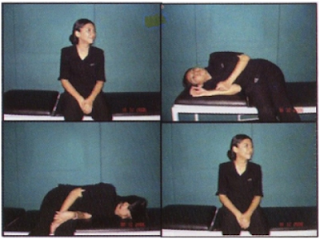Management of BPPV include observation, medication to suppress vestibular function (vestibulosuppressan), canalith repositioning, and surgery. Primary election governance is observed, Because BPPV can own resolution in weekly or monthly. Therefore, most experts recommend that only observation. However, during the observation time of patients still suffer from vertigo. As a result, patients are faced with the possibility of falling when vertigo blaze while he was on the move.
Suppressant drugs vestibular function is generally not eliminate vertigo. The term "vestibulosuppresant" is used for drugs that can reduce the incidence of nystagmus are caused by an imbalance of the vestibular system. In some patients the administration of drugs does reduce the sensation of vertigo, but it does not solve the problem. These drugs only mask the symptoms of vertigo. Giving these drugs can cause side effects such as drowsiness. Medications given them diazepam and amitriptyline. Betahistin often used in the treatment of vertigo. Betahistin is a class of antihistamines are thought to increase blood circulation and affect the ear in vestibular function through H3 receptors.
 |
| Epley Maneuver |
Three kinds of maneuvers carried out to cope with BPPV are: CRT (Canalith repositioning Treatment), Liberatory maneuvers and Brandt-Daroff exercises. Canalith repositioning advanced by Epley. CRT procedure is simple and non-invasive procedures. With this therapy is expected BPPV can be cured after patients underwent 1-2 sessions. CRT should be performed after Dix-Hallpike maneuvers if Dix-Halllpike causing an abnormal response. Examiner can identify the canalithiasis, located on the canal anterior or posterior of inferior ear . The patient does not return to a sitting position, but the patient's head rotated in order to encourage canalith out of the semicircular canals leading to the utricle, where canalith no longer cause symptoms. When the right posterior canal is involved it, right CRT action must be perfomed. This maneuver started on Dix-Hallpike position that causes an abnormal response by the head being held in this position for 1-2 minutes, then head slowly lowered and rotated left and maintained for some time. After that the patient's body with the head tilted maintained at a position facing the left at an angle of 450 so that the head is facing down looking at the floor. patients eventually returned to positions sit facing forward. After this therapy patients fitted with neck hold and advised not to crouch, lie down, bent over one day. Patients has to sleep in a sitting position and had to sleep in a healthy position for 5 days
 |
| CRT (Canalith repositioning Treatment) |
The same maneuver can also be used in patients with canalithiasis the right anterior canal. In patients with canalith, in the left anterior canal and posterior canal, left CRT is a method that can be used beginning with the head hanging and turning left to right body before sitting.
Liberatory maneuver, developed by semont, also made to move the otolith (debris) from the semicircular canals. Maneuvers are performed depending on the type of channel types are involved. Is the anterior or posterior canal. If there is involvement of the right posterior canal, done right liberatory maneuvers necessary. Maneuver begins with the patient was asked to sit on the examination table with the head turned to the left facing 450. patient sitting with the head facing left quickly laid down the right side with his head hanging to the right shoulder. After 1 minute the patient is moved rapidly to the initial sitting position and lying to the left side position, with the head turned to the left 450. Keep the patient in this position for 1 minute and slowly back position to sit. Sustainer neck then charged and given the same instructions to patients treated with CRT.
When the right anterior canal is involved, the same maneuvers were performed, but the head turned facing right. When the left posterior canal is involved, liberatory maneuvers left to do (first patients moved from left sidelying position into right sidelying position) with head facing to the right. When the left anterior canal is involved, left liberatory maneuvers performed with the head rotated to the left.
 |
| Right Liberatory maneuver |
Brandt Daroff exercises are performed at home by patients themselves unassisted by a therapist. Patients perform movements sitting position with the head turned 450, then the body was laid to the opposite side. This position was maintained for 30 seconds. Furthermore, the patient returned to a sitting position 30 seconds. After that, the patient turned his head 450 to the other, and the body was laid to the opposite side for 30 seconds. This exercise is done routinely 10-20 times. 3 series in one day.
 |
| Brandt Daroff |
Resources
Picture
1. http://www.jaoa.org/content/110/10/602/F2.expansion
2. http://american-hearing.org/disorders/benign-paroxysmal-positional-vertigobppv/

No comments:
Post a Comment